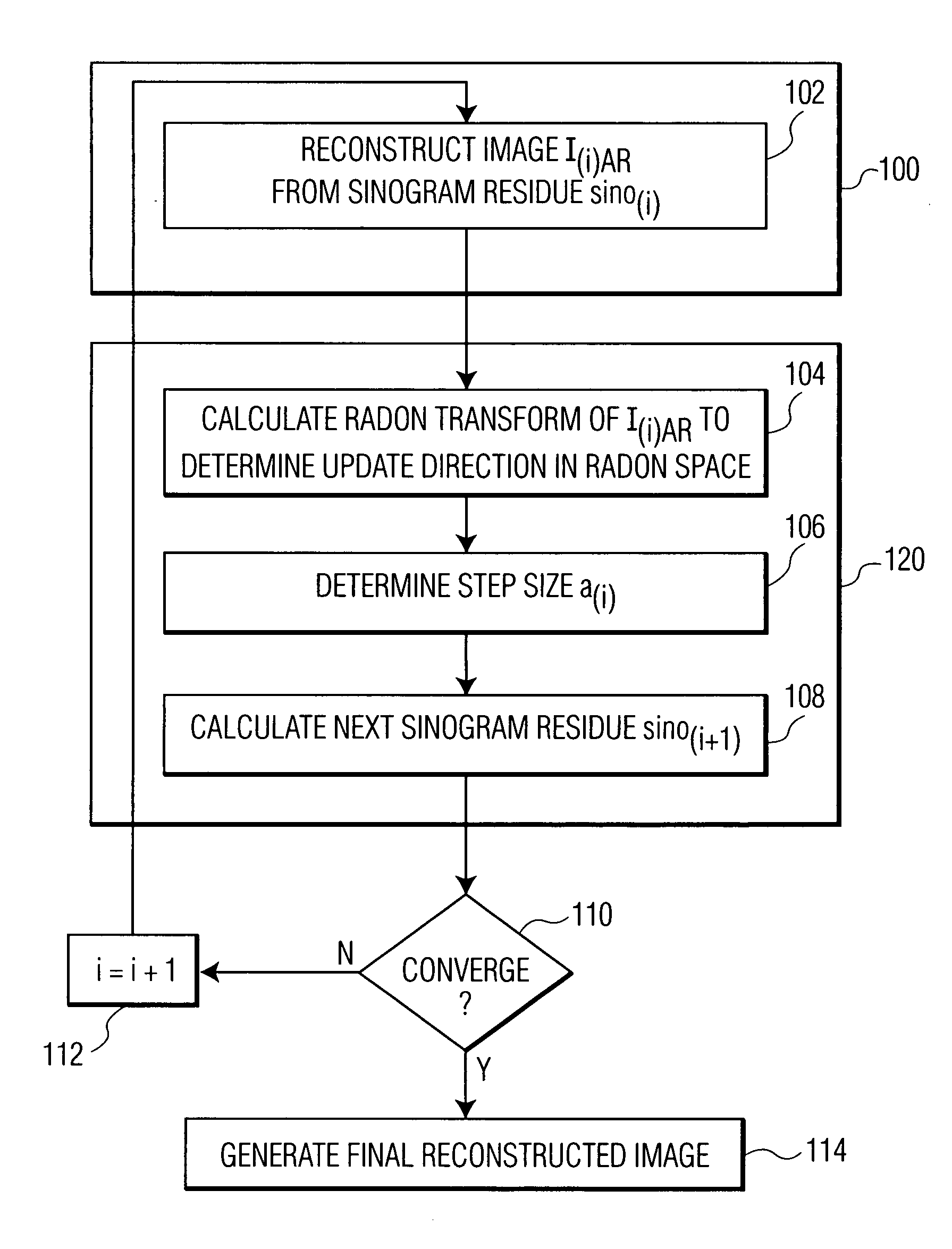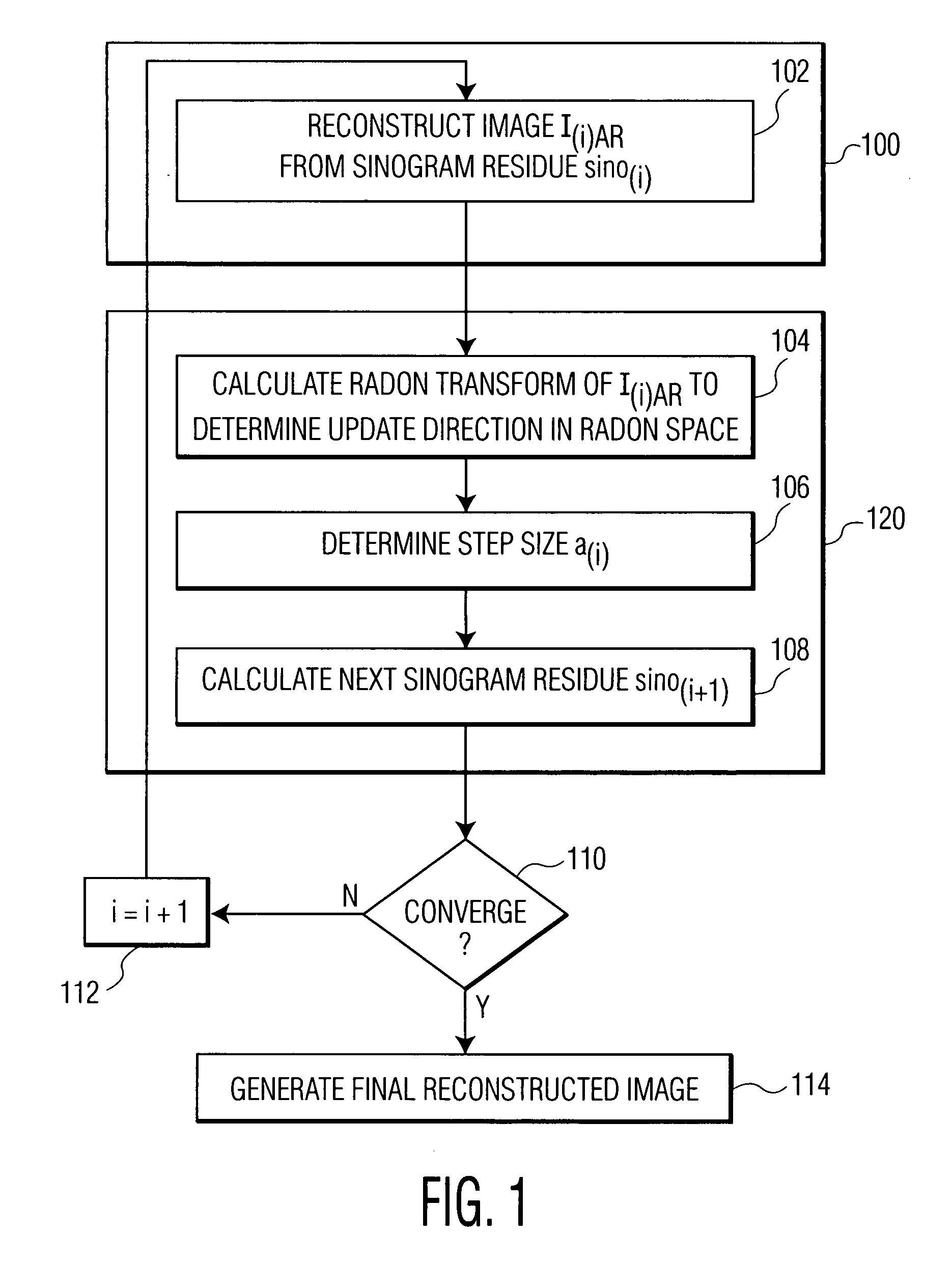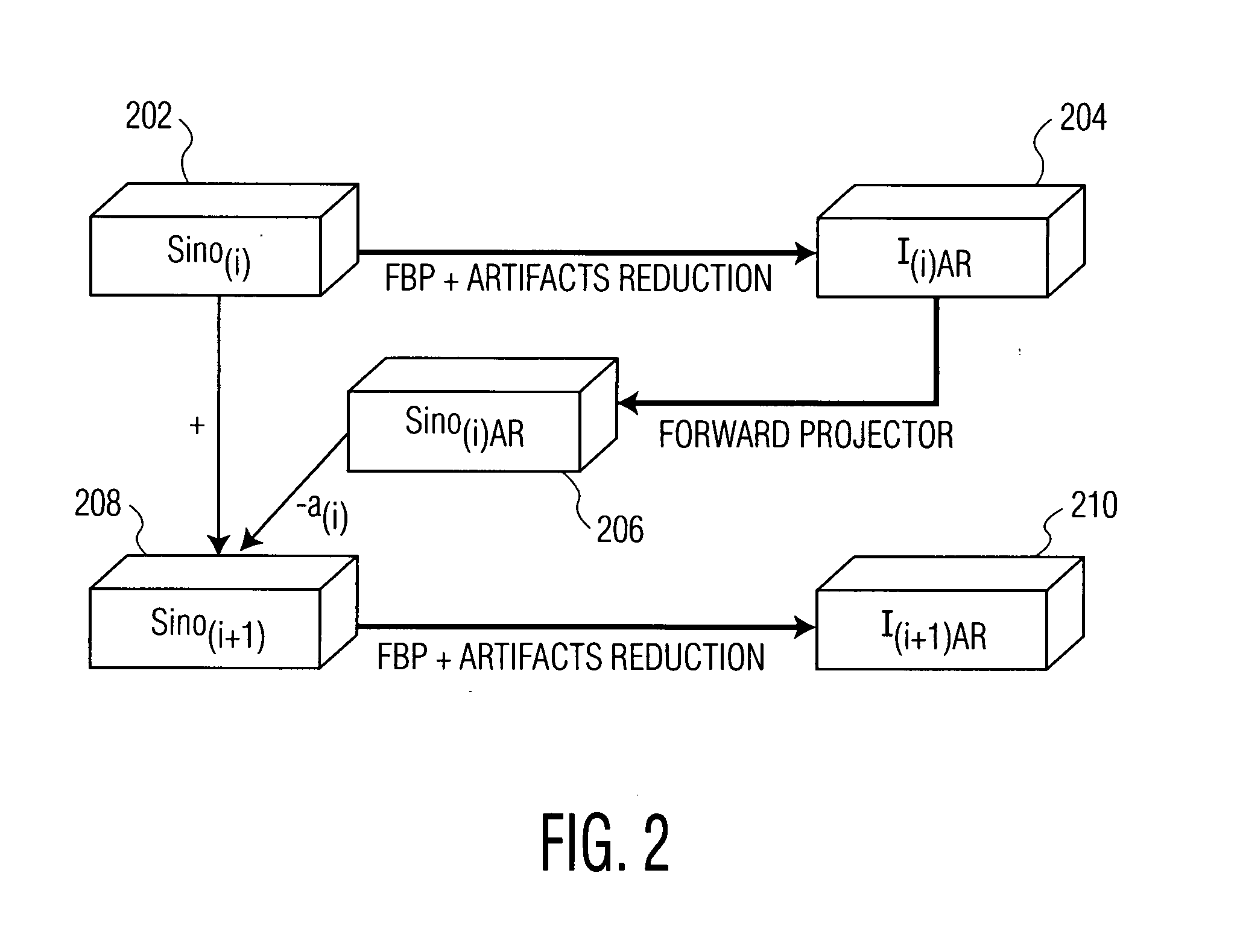System and Method For Image Reconstruction
a technology of image reconstruction and system, applied in the field of image reconstruction, can solve the problems of limiting restricting the number and quality of projection measurements, and non-iterative reconstruction algorithms that do not typically handle the limited projection measurements well, and achieves the effect of convergence and accurate results
- Summary
- Abstract
- Description
- Claims
- Application Information
AI Technical Summary
Benefits of technology
Problems solved by technology
Method used
Image
Examples
Embodiment Construction
[0015] The present invention is directed to a method for tomographic image reconstruction. The present invention can be applied to any medical imaging technology, including computed tomography (CT), magnetic resonance imaging (MRI), etc. Embodiments of the present invention are described herein to give a visual understanding of the signal downsizing method. It is to be understood, that these embodiments may be performed within a computer system using data stored within the computer system. Accordingly, some steps of the method can occur as internal representations within the computer system.
[0016] Traditional iterative image reconstruction methods discretize the Radon transform operator to form weight factors between each image pixel intensity and each sinogram value. This set of weight factors is represented as the system matrix A, and represents the forward projection from the image to the sinogram. By stacking the known sinogram values into a vector b, the reconstruction problem...
PUM
 Login to View More
Login to View More Abstract
Description
Claims
Application Information
 Login to View More
Login to View More - R&D
- Intellectual Property
- Life Sciences
- Materials
- Tech Scout
- Unparalleled Data Quality
- Higher Quality Content
- 60% Fewer Hallucinations
Browse by: Latest US Patents, China's latest patents, Technical Efficacy Thesaurus, Application Domain, Technology Topic, Popular Technical Reports.
© 2025 PatSnap. All rights reserved.Legal|Privacy policy|Modern Slavery Act Transparency Statement|Sitemap|About US| Contact US: help@patsnap.com



